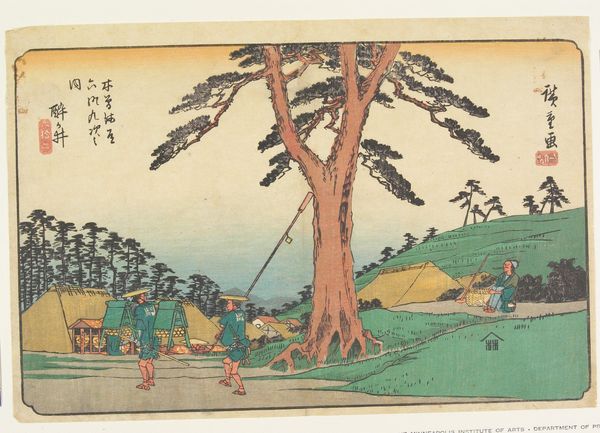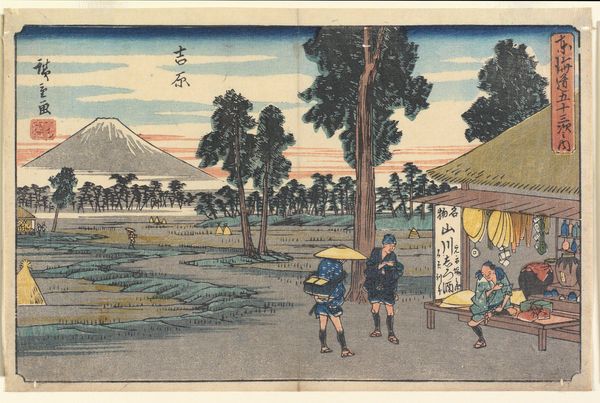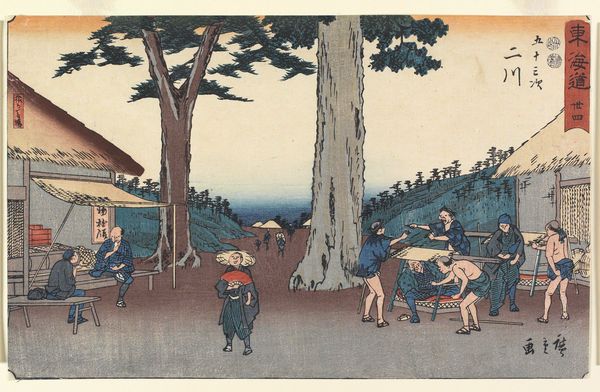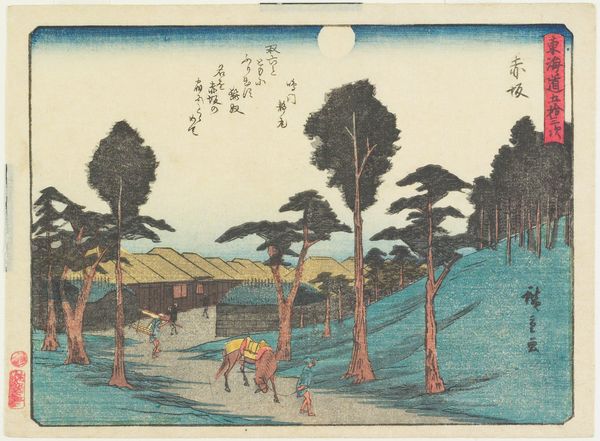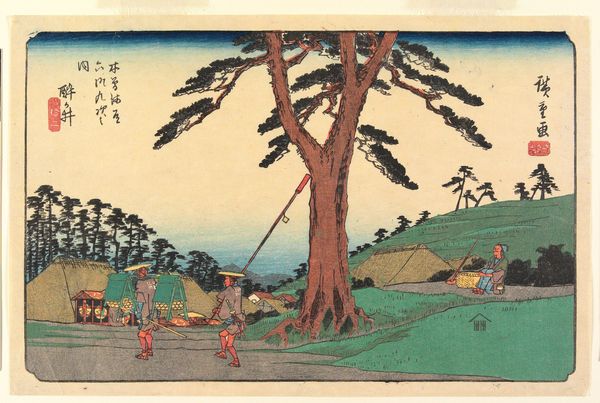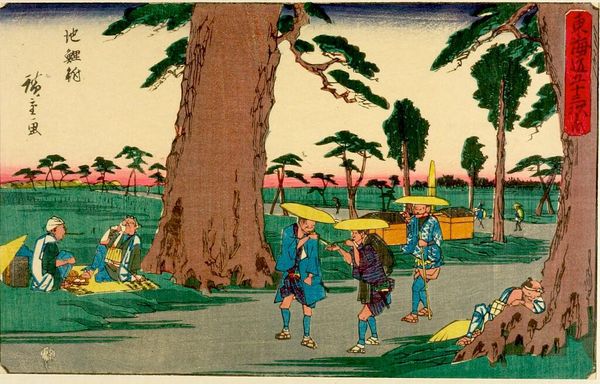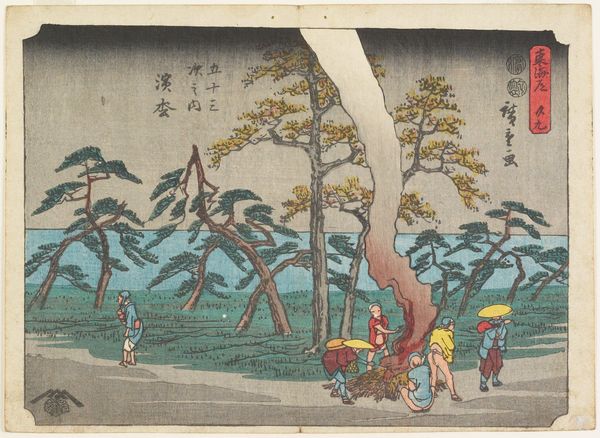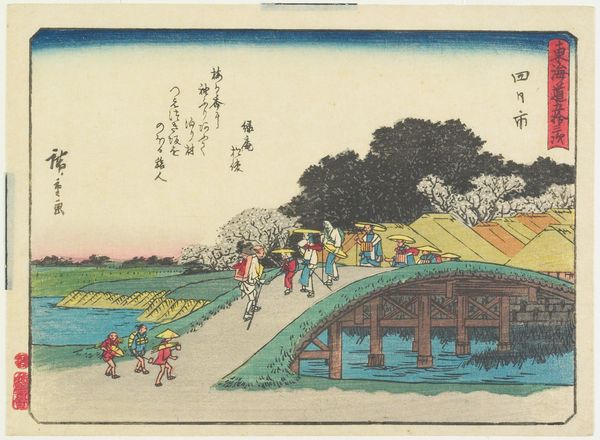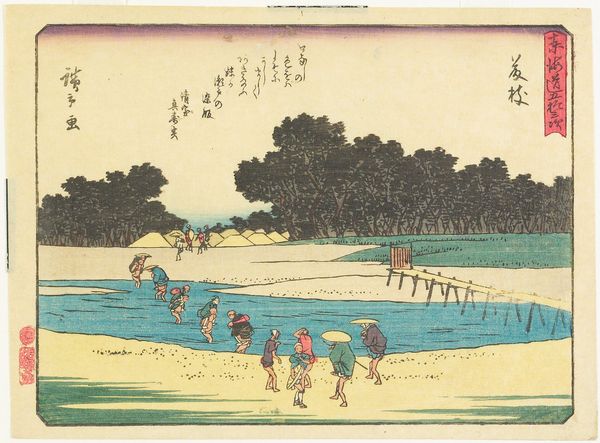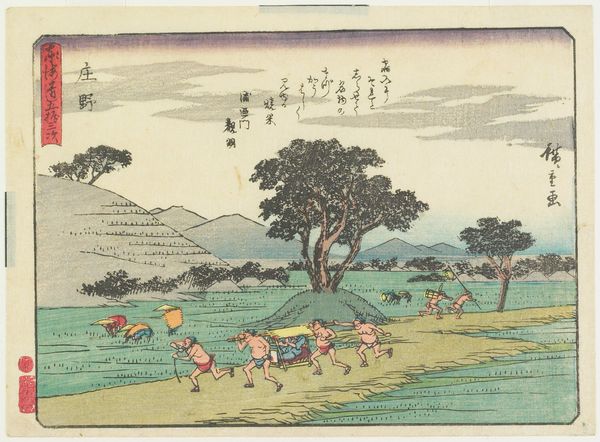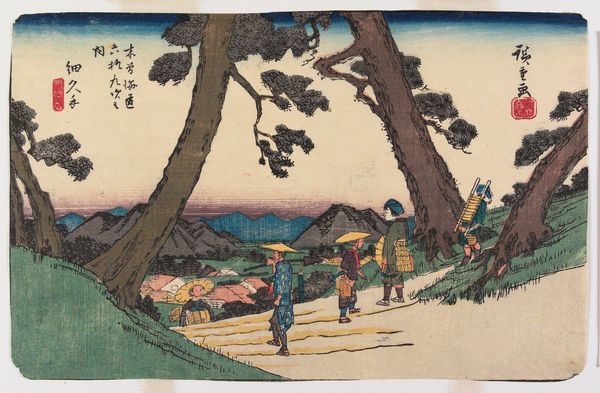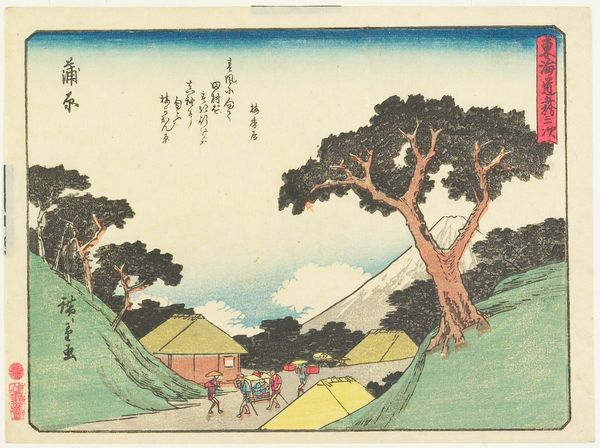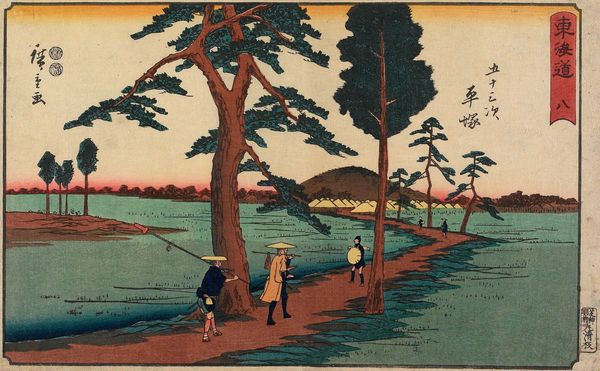
print, ink, woodcut
# print
#
asian-art
#
landscape
#
ukiyo-e
#
ink
#
woodcut
#
genre-painting
Dimensions: 7 3/4 x 12 3/8 in. (19.7 x 31.5 cm) (image)8 1/2 x 13 in. (21.6 x 33 cm) (plate)
Copyright: Public Domain
Curator: This serene woodcut is titled "Chiryu" by Utagawa Hiroshige, created between 1841 and 1842. It's part of the "Fifty-three Stations of the Tokaido" series and currently resides at the Minneapolis Institute of Art. Editor: I’m immediately struck by the way the artist uses these towering trees as framing devices, and the overall tranquility—even with figures populating the space. The composition really emphasizes the relationship between people and their environment. Curator: Precisely. Hiroshige’s work documented and, in many ways, idealized travel and the burgeoning merchant class in Edo-period Japan. "Chiryu" represents a station along the Tokaido road, a vital artery of commerce and culture connecting Edo and Kyoto. It also reflects the rise of a public audience able to access landscapes formerly only known to a tiny, highly privileged elite. Editor: It’s masterful how the textures are evoked through the woodcut technique. Look at the subtle gradations in color to indicate the dampness in the ground. The flattening of perspective almost enhances the dreamlike quality, contrasting with the naturalism he captures in the tree bark. Curator: It’s crucial to understand ukiyo-e prints like this weren't high art for an elite few but mass produced for popular consumption. These prints gave rise to a type of tourism. People bought them before, during, and after travel. They were keepsakes as much as records. And many were also disseminated quite widely to promote this new kind of landscape awareness. Editor: And beyond the social context, let’s observe how Hiroshige uses diagonals to create dynamism. From the road itself, the eye follows lines leading toward the more distant vista, implying further adventures or movement towards future destinations. Also the blue and brown tonality creates unity but adds depth. Curator: The composition subtly invites us to reflect on themes of work and leisure, the contrast between figures taking a break and those carrying baggage. This mirrors, to some extent, the lives of the purchasers themselves. We observe also those like the artist or his publishers who must stay ever alert in order to benefit from or assist the travelers, even when exhausted. Editor: Considering that this is a print made from carved woodblocks, the nuance achieved is truly astonishing. The subtle blend of colors and refined details like individual blades of grass…remarkable! It evokes a powerful feeling of actually being there. Curator: Seeing "Chiryu" then invites us to ponder not only Hiroshige's mastery, but also the complexities of Japan’s transformation during that era: commerce, expanding mobility and the artistic democratization. Editor: Yes, absolutely. For me, its enduring power resides in its visual harmony; how this constructed landscape resonates so profoundly, regardless of time or location.
Comments
No comments
Be the first to comment and join the conversation on the ultimate creative platform.
